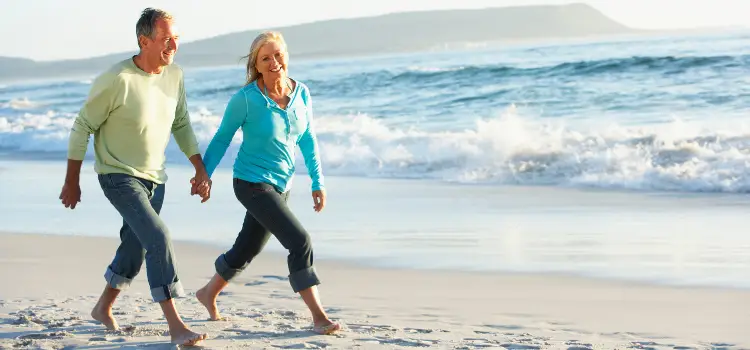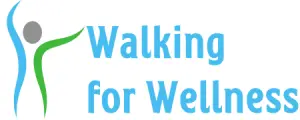
Why start walking today? Walking is one of the simplest, most effective, and beginner-friendly ways to improve your health and well-being. Whether you’re looking to boost your fitness, lose weight, reduce stress, or just move more, walking is a fantastic place to start—no gym membership or fancy equipment required!
If you haven’t exercised in a while (or ever), don’t worry. This guide is designed to help you ease into walking safely, build confidence, and enjoy the journey toward a healthier you. This is do-able and tailored to you!
Why walking is the perfect First Step
Walking is low-impact, gentle on the joints, and adaptable to all fitness levels. Studies show that walking just 30 minutes a day can:
- Improve heart health by reducing the risk of cardiovascular disease (AHA, 2023)
- Lower blood pressure and cholesterol (Mayo Clinic, 2022)
- Help with weight management and fat loss (Harvard Health, 2021)
- Boost mental health, reducing anxiety and depression (Psychological Science, 2022)
- Enhance mobility and balance, reducing the risk of falls (CDC, 2023)
The best part? You can start walking right now, right where you are, at your own pace. To get started, you don’t even need fancy shoes or gear, simply pop on some comfortable clothes and shoes, grab the keys and water, and walk out the door!
Overcoming the Biggest Hurdle – Just Getting Started!
Many beginners feel overwhelmed by the thought of starting an exercise routine. If this sounds like you, take a deep breath—you’re not alone. Chances are you can tick at least one or two of the common concerns listed below. We are here to let you know that you can do it!
Common concerns & how to overcome them:
- “I haven’t exercised in years.” – Start small. Even a 5-10 minute walk is a great first step. The key is consistency over intensity.
- “I don’t have time.” – You don’t need an hour at the gym. Walking can fit into your daily routine—lunch breaks, errands, or a short evening stroll.
- “I’m out of shape.” – That’s okay! Walking is one of the safest and easiest ways to build endurance. Start with short distances and increase gradually.
- “I get bored.” – Listen to music, a podcast, or bring a friend. Exploring different routes also keeps things interesting!
- “I don’t have the right gear.” – Start with what you have: comfortable clothing and a comfortable pair of shoes, a hat and a water bottle. Specific walking gear and other things like rain gear for walking – can wait.
- “I’m worried about my joints.” – Walking is gentle on the body, but if you have knee or joint pain, start on soft surfaces (like grass or a treadmill) and wear supportive shoes.
Step-by-Step Guide to Start Walking for Fitness
We are going to keep this really simple and easy to achieve.
1. Set a Realistic Goal
- If you’re just starting, aim for 10–15 minutes per day.
- Gradually increase to 30 minutes, 5 days a week, as recommended by the CDC (2023).
- Don’t focus on speed or distance yet— start walking and just move!
2. Wear the Right Shoes
- Invest in comfortable, supportive walking shoes that reduce impact on your joints.
- Look for:
- Cushioning for shock absorption
- Arch support
- A snug but breathable fit
3. Start walking with a Warm-Up
Before heading out, loosen up your muscles with gentle movements:
- Ankle rolls (10 each direction)
- March in place for 1-2 minutes
- Gentle hamstring stretch
4. Walk with Proper Form
- Keep your head up & shoulders relaxed
- Swing your arms naturally for momentum
- Land softly on your heel & roll through to your toes
- Maintain a steady, comfortable pace
5. Build Up Gradually
- Week 1: 10–15 minutes per day
- Week 2: 20 minutes per day
- Week 3: 30 minutes per day (or break it into 2 shorter walks)
How do you feel about that? Do-able? We think so. Small, consistent progress is better than overdoing it and burning out.
Pro Tips to Make Walking a Habit
Find a Walking Buddy – A friend, neighbor, or dog makes walks more fun and motivating!
- Choose Enjoyable Routes – Walk in parks, nature trails, or along the beach to keep things interesting.
- Make It Part of Your Routine – Attach walking to an existing habit (e.g., after your morning coffee or during lunch).
- Track Your Progress – Use a simple step counter, fitness app, or smartwatch for motivation.
- Consider using a walking pad/treadmill – As you progress or the seasons/weather changes, you may want to consider a walking pad or treadmill. We have reviewed budget options for walking pads to get you started.
Bonus: Try listening to audiobooks or podcasts to make walking even more engaging.
Safety First – Listen to Your Body
If you experience:
- Sharp pain, dizziness, or extreme shortness of breath – Stop immediately and consult a doctor.
- Mild soreness or fatigue – This is normal, but don’t push through discomfort. Rest if needed.
- Feeling energized and accomplished—You’re on the right track!
If you have a chronic health condition, check with your doctor before starting a new fitness routine. Our article about Ankle Sprain Injury : Should You Walk or Rest, will be helpful if you are recovering from an ankle sprain. Please make sure you’re up to date with the latest PEACE and LOVE injury management, which replaces RICE.
Next Steps – Your Walking Journey Begins Today!
Remember: It’s not about speed or distance—it’s about getting started.
Start where you are, celebrate small wins, and enjoy the benefits that walking brings to your body and mind.
Take some time to think about one goal that you have for your walking journey. We would love to support you as you take the first steps to health and wellness.
Keep motivated and encouraged by checking our Walking for Wellness Facebook page and Walking for Wellness Instagram accounts.
References
American Heart Association (2023). The benefits of walking for heart health. Retrieved from www.heart.org
Mayo Clinic (2022). Walking: A step in the right direction. Retrieved from www.mayoclinic.org
Harvard Health (2021). Walking for weight loss and longevity. Retrieved from www.health.harvard.edu
Centers for Disease Control and Prevention (CDC) (2023). Physical Activity Guidelines for Americans. Retrieved from www.cdc.gov
Psychological Science (2022). Exercise and mental well-being: The power of movement. Retrieved from www.psychologicalscience.org
